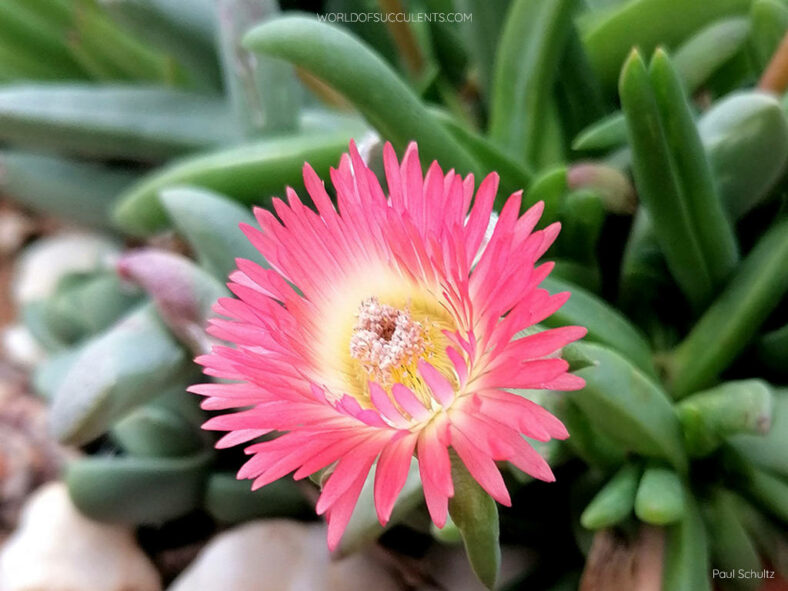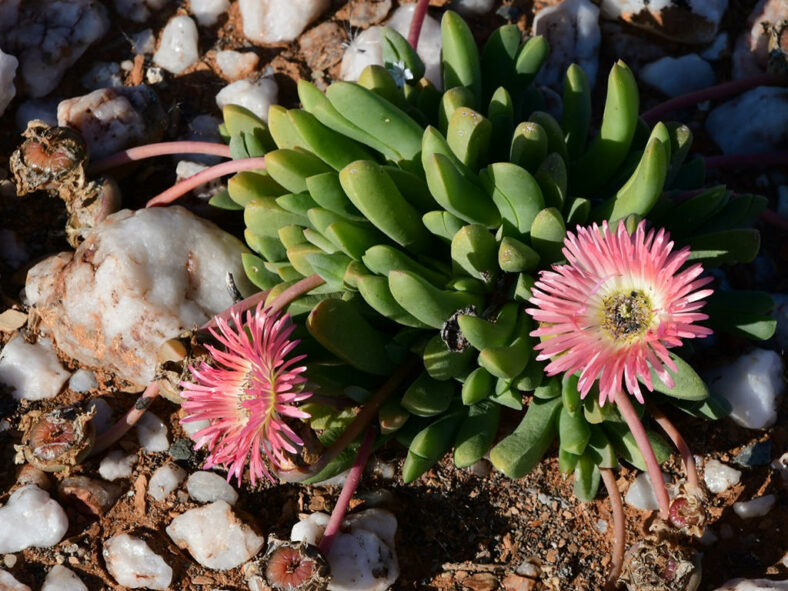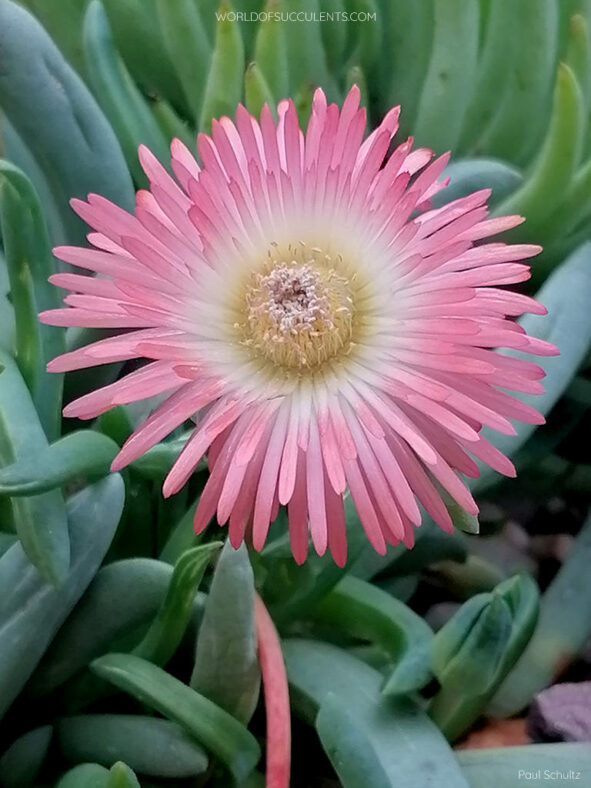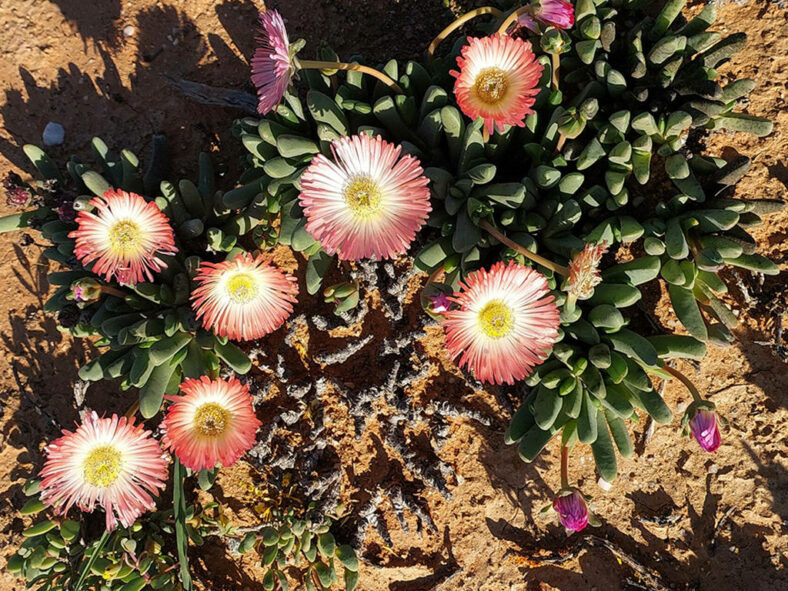Cephalophyllum spissum is similar to Cephalophyllum caespitosum but it strictly grows compact and has fewer branches and longer leaves. It also has fruits with 11 to 15 locules instead of 9 to 10 in the latter.
Scientific Name
Cephalophyllum spissum H.E.K.Hartmann
Scientific Classification
Family: Aizoaceae
Subfamily: Ruschioideae
Tribe: Ruschieae
Genus: Cephalophyllum
Etymology
The specific epithet "spissum" (pronounced SPIS-sum) means "thick, close, compact, dense, crowded" and refers to the compact growth of the species.
Origin
Cephalophyllum spissum is native to South Africa. It grows on quartz flats in Vanrhynsdorp, a settlement in the Western Cape province.
Description
Cephalophyllum spissum is a small succulent that forms compact clumps of short branches with pairs of fleshy, dark green leaves. The leaves are triangular in cross-section, markedly unequal in the young leaf pairs, and can grow up to 2.4 inches (6 cm) long.
In the winter, Cephalophyllum spissum produces beautiful flowers with numerous narrow, pink to magenta petals. The flowers can reach a diameter of 1.6 inches (4 cm), and the petals are usually paler near the base. The fruits are 11- to 15-locular capsules and can grow up to 0.6 inches (1.5 cm) in diameter.

How to Grow and Care for Cephalophyllum spissum
Light: This succulent requires bright light but not too much direct sunlight. So, a windowsill that receives 4 to 5 hours of direct sunlight in the morning and partial shade in the afternoon will be a perfect spot for indoor growing.
Soil: Cephalophyllum spissum thrives in porous soil, allowing the water to drain away quickly. Therefore, use commercial soil for succulents or make your own well-draining mix.
Temperature: High temperatures are not a problem as long as there is plenty of fresh air, but this plant is not cold-hardy. It grows best in USDA Plant Hardiness Zones 9b to 11b, with average minimum winter temperatures ranging from 25 to 50 °F (-3.9 to 10 °C).
Watering: To keep your plant healthy, it is most important to know when, how much, and how often to water. During the dormant period, usually in summer, Cephalophyllum spissum requires little or no water. In the fall, once it grows again, water thoroughly but allow the soil to dry between waterings.
Fertilizing: As long as you repot this plant every two years, it does not need fertilizer.
Repotting: Even if it can stay happy in the same pot for years, once in a while, you can repot your plant to give it more space anytime during the growing season. However, the best time is at the beginning of the growing season.
Propagation: Although it is usually started from seeds, Cephalophyllum spissum can be easily propagated by division. The best time to divide the plant is in late summer, just before it begins to break its dormancy, while fall is ideal for sowing the seeds.
Learn more at How to Grow and Care for Mesembs.
Toxicity of Cephalophyllum spissum
Cephalophyllum spissum is considered non-toxic, so having it around kids and pets is safe.
Links
- Back to genus Cephalophyllum
- Succupedia: Browse succulents by Scientific Name, Common Name, Genus, Family, USDA Hardiness Zone, Origin, or cacti by Genus
Photo Gallery
Click on a photo to see a larger version.


